Let’s dive into some sensational swimming facts! Whether you’re backstroke or butterfly, the history of swimming will amaze you.
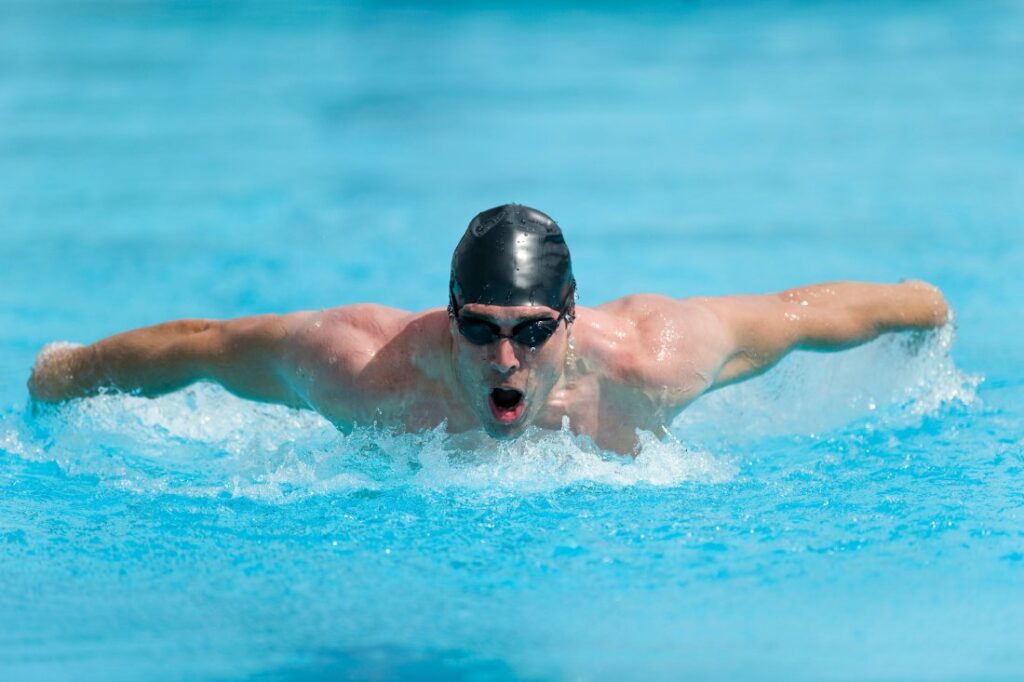
If you’re reading this, you’re probably already someone who loves swimming. But did you know that the majority of people on Earth don’t know how to swim?
And that number includes almost 60% of Americans. That’s just one of the facts about swimming you’ll discover if you keep reading!
We’ll also look at some truly astonishing swimmers who have broken the mold over the years and pushed the limits of what the human body can do in the water.
From the Olympic prowess of Michael Phelps and Katie Ledecky to the unbelievable endurance swimmer Diana Nyad, and to the man who played Tarzan, Johnny Weissmuller, there’s so many incredible athletes who can lay claim to GOAT status.
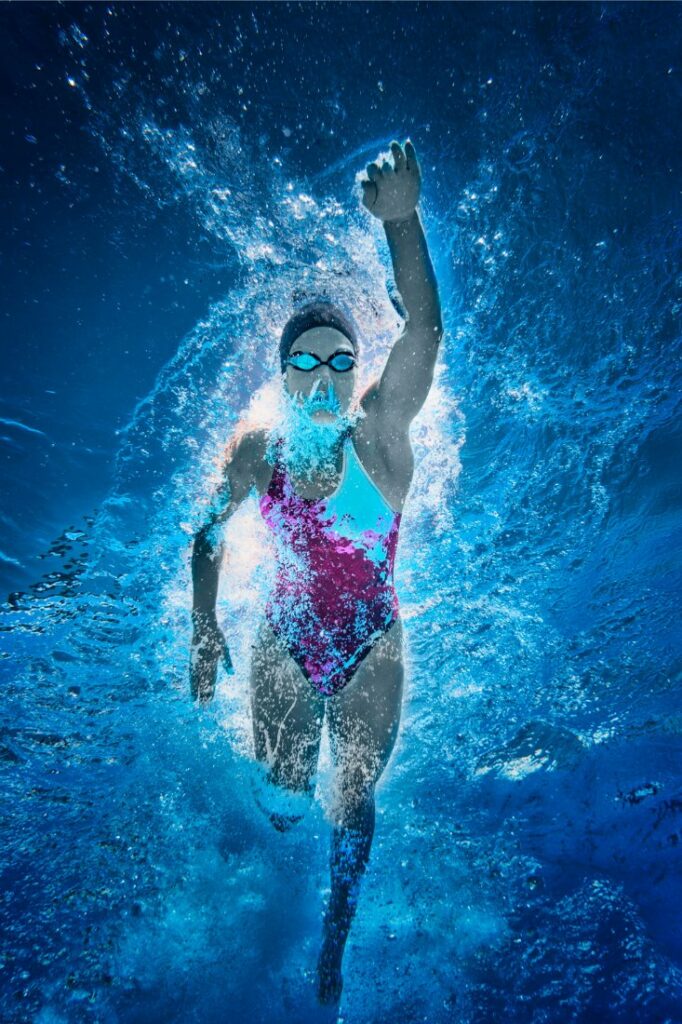
There’s also some pretty cool swimming facts about the largest pools, the longest breath hold, and some interesting cave paintings discovered in Egypt. You’ll definitely learn something new about one of the most ancient forms of human exercise.
We’ll also debunk or confirm a few swimming-related beliefs along the way including – can babies swim? Do larger people float better? Does swimming burn more calories than cycling?
So what do you say? Are you ready to dip your toes into these swimming facts? Let’s dive in!
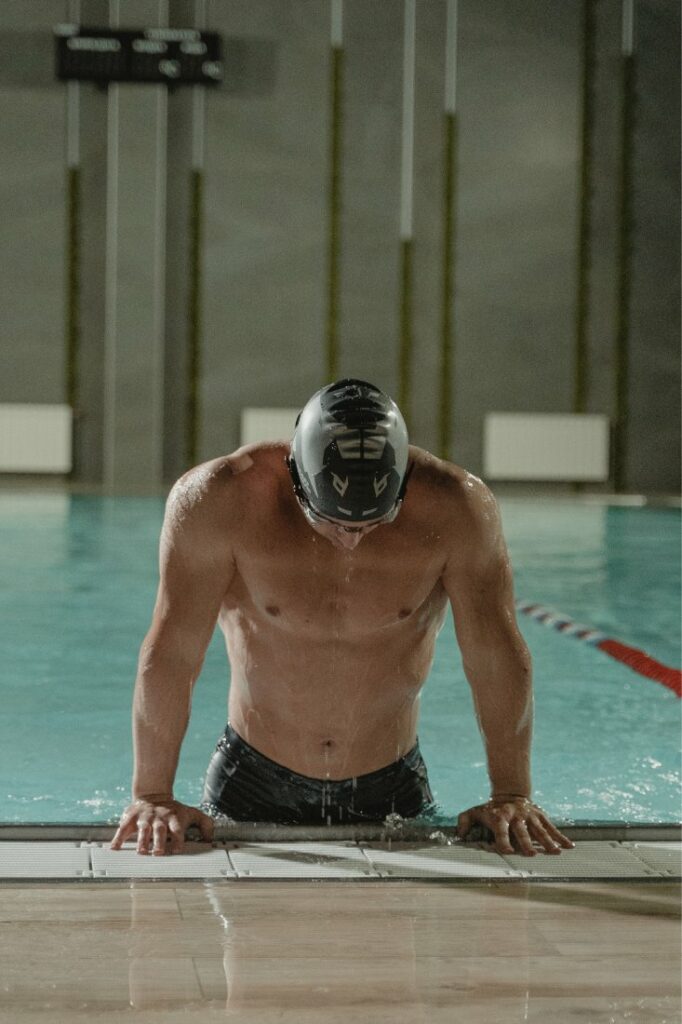
Contents:
21 Fun Facts About Swimming
1. What are the four official swimming strokes?
If we’re talking about competitive swimming, there are four specific strokes that athletes perform during races. The traditional overhand crawl is called freestyle.
The other strokes are backstroke, breaststroke and butterfly stroke. Freestyle is the fastest stroke and breaststroke is the slowest.
2. How many people can’t swim?
Believe it or not, billions of people around the world can’t swim. In fact, it’s estimated that over 4 billion people worldwide are unable to stay afloat.
This includes almost 60% of Americans. The Red Cross recommends everyone take lessons to learn how to swim because it could save your life.
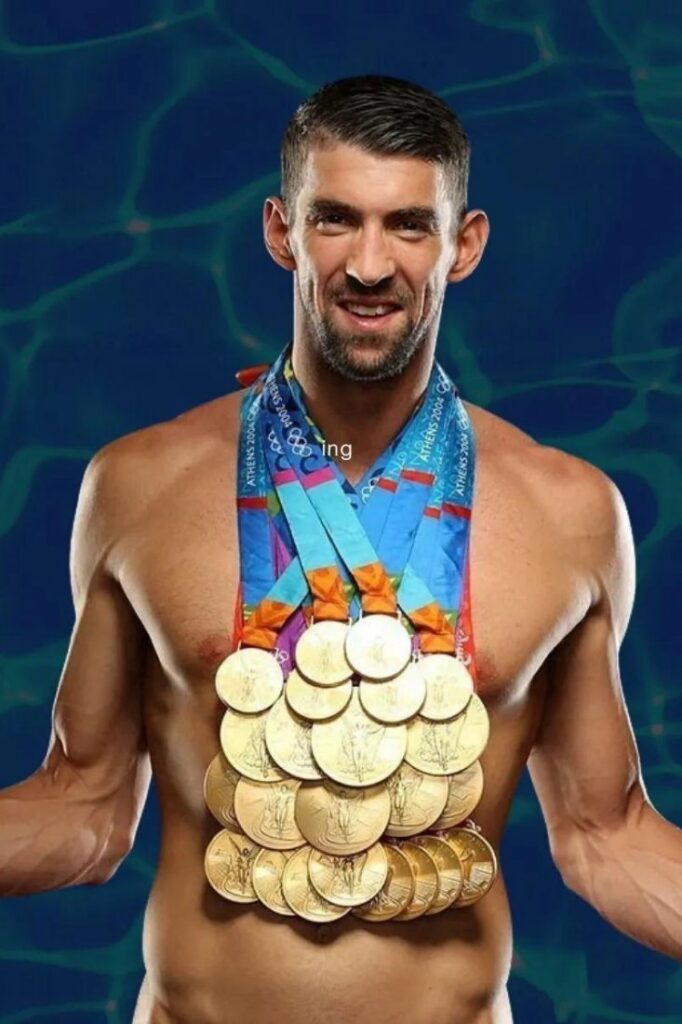
3. Is there a swimming GOAT?
When you’re searching for the GOAT of swimming you have to look at Michael Phelps and Katie Ledecky of the USA.
Michael Phelps won an incredible 23 gold, 3 silver and 2 bronze medals, while Katie Ledecky has won 7 golds and 3 silvers.
4. How long have humans been swimming?
Did you know that the ancient Africans also swam? Documented in cave paintings in The Cave of Swimmers in Egypt, the Neolithic art first depicted swimmers from over 10,000 years ago.
The cave drawings also included pictograms of hippopotamuses and giraffes!
5. A famous inventor as a child
Did you know that Benjamin Franklin was inventing new innovative products at the tender age of 11?
In 1717, Franklin developed the first flipper prototype to aid in swimming. Franklin’s other inventions include the lightning rod, bifocals, and urinary catheter.
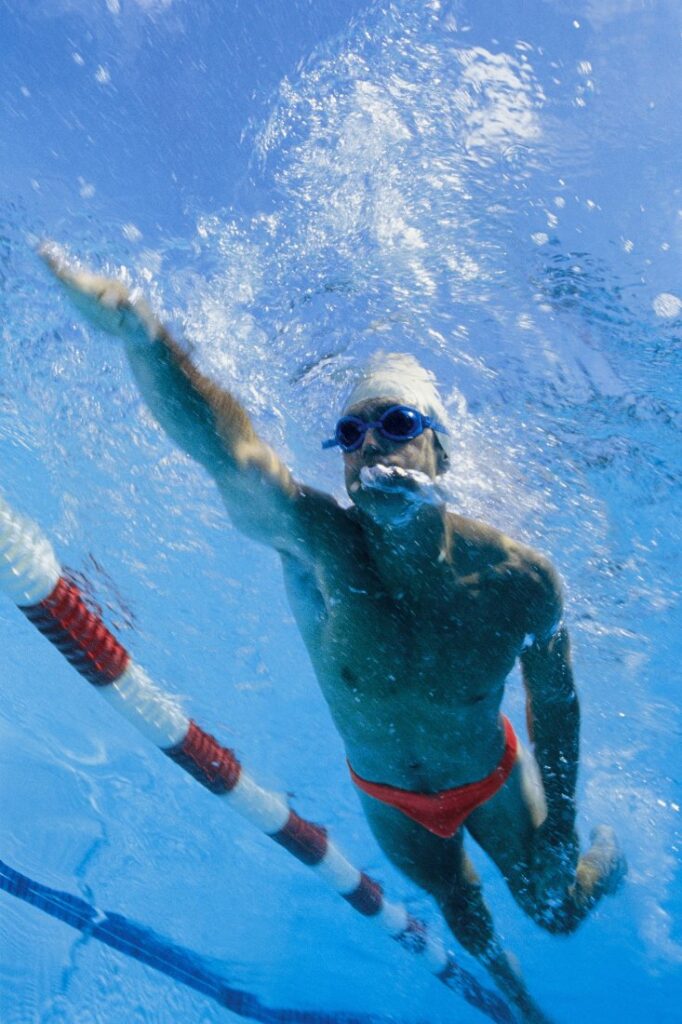
6. What muscles do you use while swimming?
Swimming is one of the best activities to do for overall health since all the muscle groups are being worked in a low-impact environment.
Arms, legs, back, trunk, and shoulders are all essential to create an efficient swimming stroke. In fact, swimming burns more calories than cycling!
7. A few Olympic swimming facts
Currently there are 35 swimming races on the schedule for the Paris 2024 Olympic Summer games.
The newest additions are the mixed relays, where teams of two men and two women compete for their country in the 4×100 freestyle and the 4×100 mixed relay.
8. When did we start swimming indoors?
The idea of an indoor pool is a relatively new one in the world of swimming. The first indoor swimming facility was known as St. George’s Baths. The pool opened in 1828 as a public enterprise in London, England.
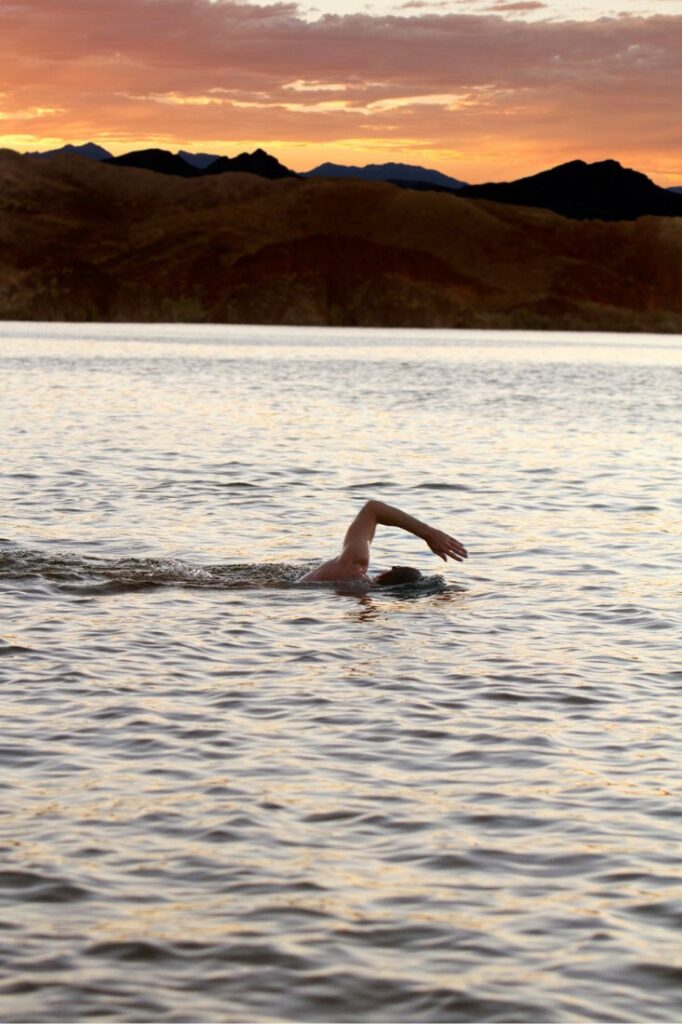
9. An incomparable endurance swimmer
Diana Nyad is one of the most celebrated endurance swimmers of all-time. Among her feats is being the only person to swim from Cuba to Florida without a shark cage.
She has also swam around Manhattan and from the Bahamas to Florida. Nyad has been stung several times by jellyfish on her long distance swims.
10. A pool of massive size
The Citystars Sharm El Sheikh in Egypt is the world’s largest swimming pool. If you can believe it, the seawater pool that opened in 2015 measures at over 1 million square feet!
The total cost to build a pool that large? A cool $5.5 billion.
11. A race to the shore
The first Olympic swimming events were not as glamorous as they are today. In 1896, swimmers were brought out into the open water via a sailboat and then told to leap off.
The first person to make it to shore was declared the gold medal winner. The first winner of the event is rumored to have said he was swimming for his life, not to win the race.
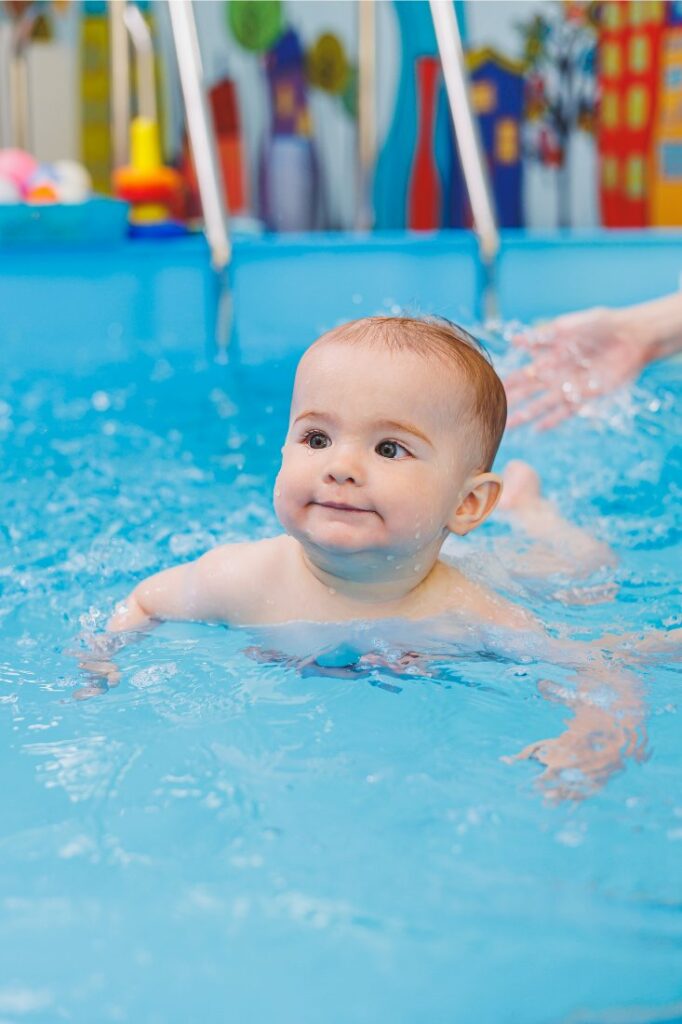
12. Can babies swim?
While many believe that a baby will instinctively swim when put into water, that is not entirely true.
While reflexively a baby will move its arms and legs when submerged, the act of swimming is impossible. This is because babies don’t have the ability to lift their head above water.
13. What is the butterfly stroke exactly?
The newest stroke in the swimming big 4 is butterfly. It was introduced when athletes modified the breaststroke by bringing the arms out of the water and performing a dolphin kick.
However, when swimmers started using the butterfly technique in breaststroke competitions and winning by large margins it was ruled illegal. The breaststroke remained and the butterfly was added as a new stroke.
14. Why do some people float better than others?
Have you ever wondered why some people can float seamlessly on top, while others have a hard time even keeping their chin out of the water?
Well it all has to do with density. So if you’re carrying a little more weight, you will actually float better than your lighter counterparts.
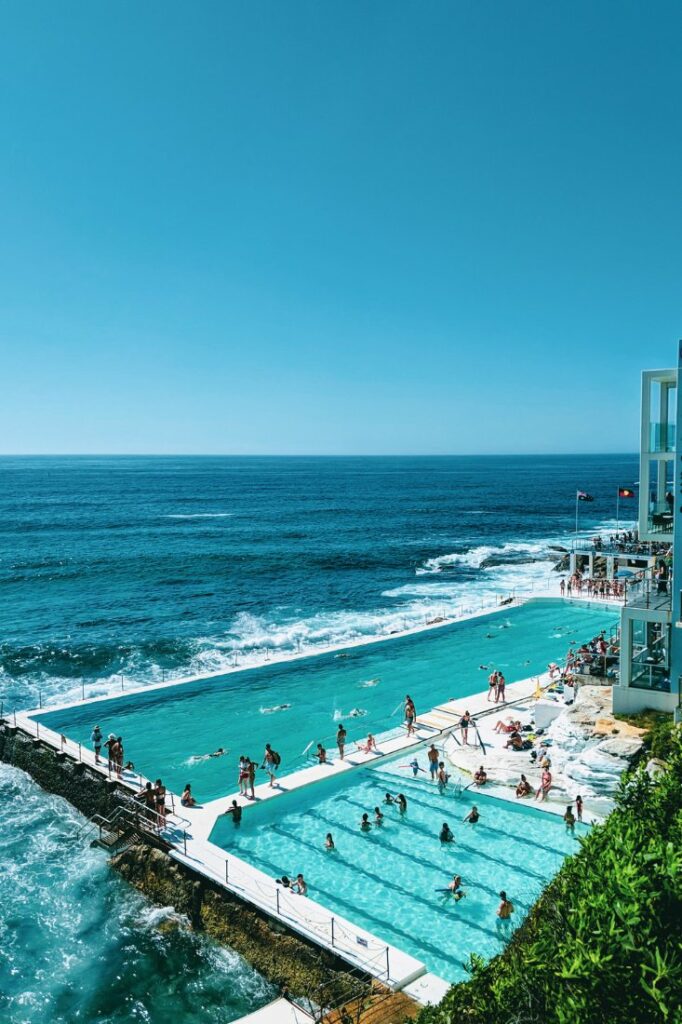
15. The supple and stretchy ankles of swimmers
In order to achieve faster swimming times, professional swimmers train their ankles to be as mobile as a seal’s flipper.
While ankles are one of the chronically most under stretched parts of the body, swimmers can flex them at the same angle as a dolphin’s tail to get maximum kick speed while swimming.
16. The first swimming stroke used by ancient humans
The classic doggy paddle stroke was first used by humans when they began swimming by imitating other four-limbed creatures.
Another interesting doggy paddle fact. It’s taught during stealth military training, because it’s the quietest swimming stroke with all four limbs under water.
17. How long can you hold your breath?
This has to be one of the most impressive facts about swimming we came across! Well, not so much swimming, but floating in water and holding your breath.
In 2021, Budimir Somat of Croatia held his breath for 24 minutes and 37 seconds breaking the Guinness World Record. We’d be lucky to hold our breath for 37 seconds!
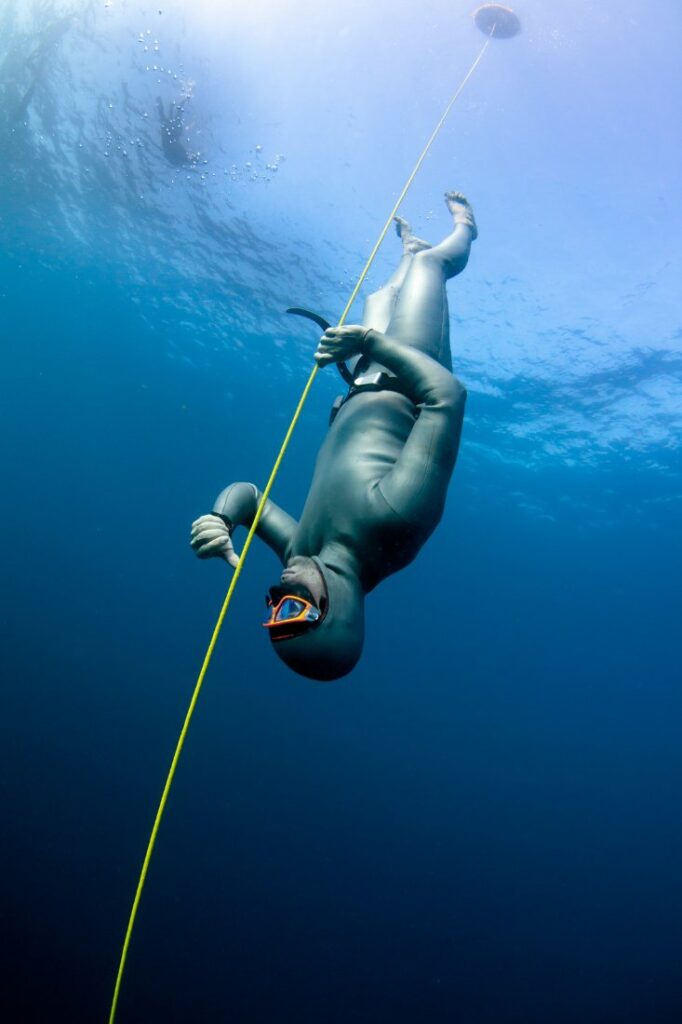
18. An Olympic-sized pool
The 50-meter pools used at the Olympics and World Championships are filled with over 850,000 gallons (3,217,600 liters) of water. That’s enough water to fill 10,000 bathtubs!
Olympic pools are also kept around 80°F (27°C) so swimmers’ muscles stay warm and they can perform the fastest times possible.
19. The king of the jungle and the pool
American swimmer Johnny Weissmuller was the first man to break the 1 minute mark in the 100m freestyle and won 6 Olympic medals in swimming and water polo.
However, Weismuller might be best remembered as Tarzan in 12 films from 1932-1948. Not only was Tarzan great at swinging on vines, he could swim too!
20. One of the strangest swimming facts
Did you know that the first goggles were made in Persia out of tortoise shells? This was back in the 14th century and were developed by pearl divers to be able to open their eyes underwater.
But how did they polish the tortoise shells to be able to see through them? We still don’t know if we believe this swimming fact!
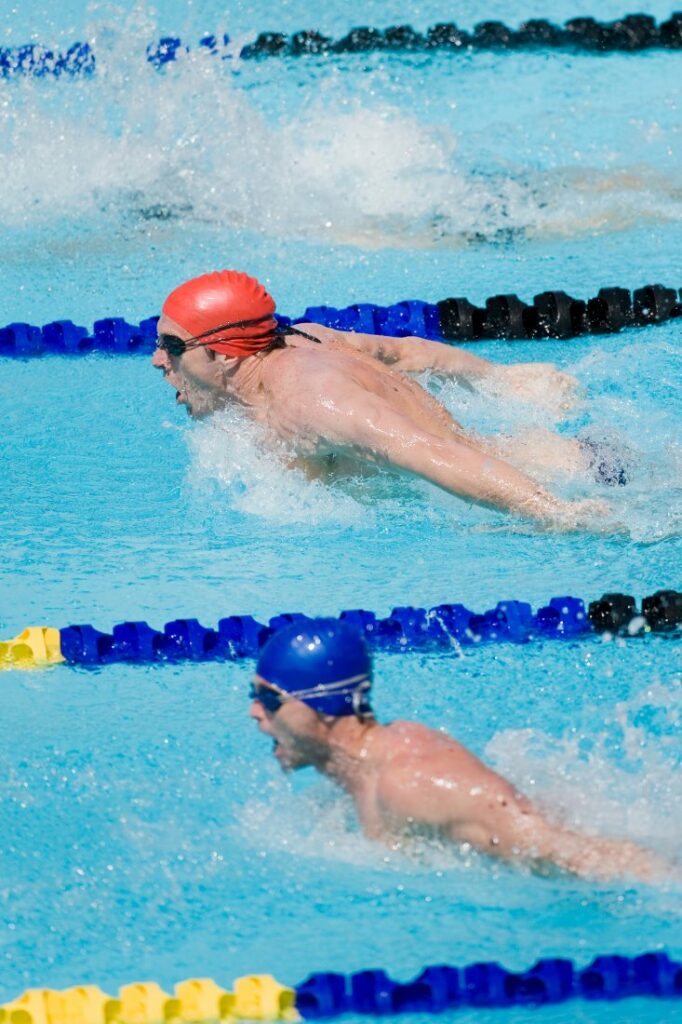
21. What is the purpose of the lane markers in a pool?
Have you ever noticed that the lane markers in pools are made up of individual disks? This is actually designed so that the drag of the water decreases between the lanes.
If the lane markers weren’t there it would be waves and chaos in the pool. The markers also vary in color to indicate the distance left in the length of the pool.
We really hope you enjoyed all our fun facts about swimming! Did you learn something new?
If there’s any swimming facts we missed, you can let us know in the comments below and we’ll add them to this article!
